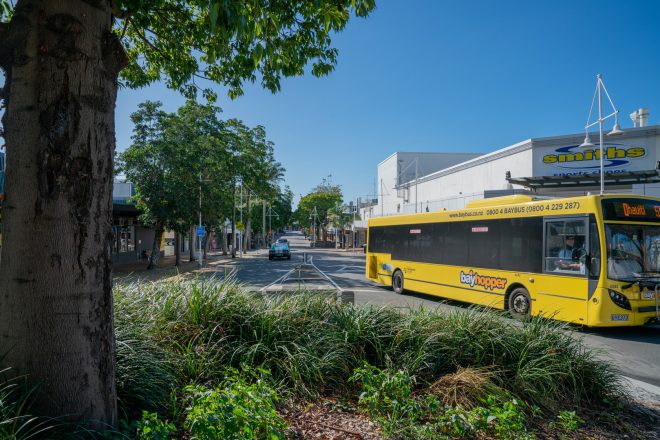普伦
蒂湾 2021 年地区陆运计划已获批准,以便就未来 10 年为交通发展项目预留的 30 亿美元预算支出进行公众咨询。
已经成立了一个小组委员会来监督公众磋商,预计将于 3 月 5 日开始,公开听证会定于 4 月 13 日至 15 日举行。该委员会由 Whakatane 副市长安德鲁·伊斯勒斯、罗托鲁瓦副市长戴维·唐纳森、地区议员莱尔·瑟斯顿、地区议员简·尼斯、陶朗加市议会委员(尚待决定)和瓦卡·科塔希新西兰运输局的科塔希大卫·斯皮尔斯组成。他们将共同努力,最终确定在 6 月 30 日向 Waka Kotahi 新西兰运输局提交的计划。
该计划将概述各区域十年陆运方案和投资战略,重点是应对模式转变、公共交通和气候变化问题。该计划的主要目标是:人的健康和安全;包容性获取;环境可持续性;经济繁荣;复原力和安全。
卡沃劳市长马尔科姆·坎贝尔和 Waka Kotahi NZTA 在普伦蒂湾地区委员会区域运输委员会会议上进行了交流。坎贝尔表示,2019 年,他曾要求将 34 号州道 2 公里每天使用数千辆卡车的速度限制从 100 公里/小时改为 70 公里。“我们有三个主要的十字路口,重型交通工具一直进出。卡韦劳区议会有一个大型卡车运营,车辆在 100 公里/小时的速度通过那里。”坎贝尔的目标是尽快解决这个问题,以避免悲剧。
委员会同意,未来计划的提案声明应包括在公众磋商中,而不是期待人们阅读一份庞大而重要的文件。



























































